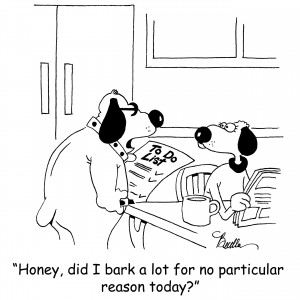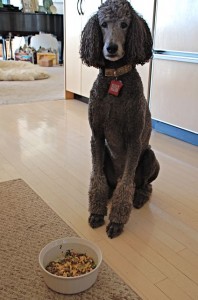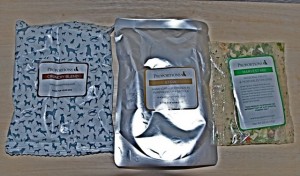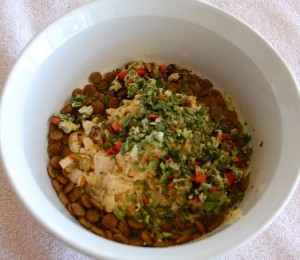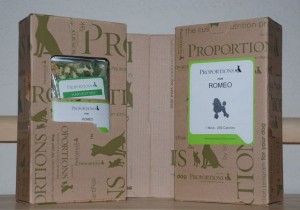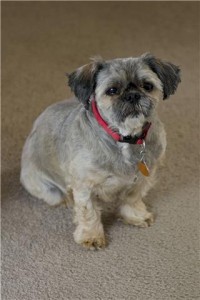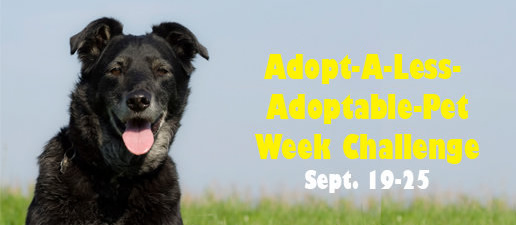Okay, that might not be news to you, but it was to Jenny, a friend and first-time doggie mom. She was frantic because Emma, her puppy, barked at people walking by the house on the sidewalk, at squirrels, and no surprise, when Jenny left her alone in her crate.
All this barking sounded normal to me if not always desirable. But, before I could suggest that Jenny bring up Emma’s barking bonanza to her her puppy kindergarten class, and toss a Kong stuffed with Emma’s favorite food into her crate before Jenny left the house, Jenny searched for a solution on the internet. If you aren’t sure what you’re looking for and are desperate for a so-called ‘quick fix,’ that could be a mistake.
I googled ‘stop dog barking’. What did I find? A panoply of punishments. Shock collars. Spray collars. Sonic contraptions that send out high-pitched sounds that dogs find uncomfortable if not painful. I’ve described the problems inherent in using these sorts of punishments in two previous posts, “To Shock or Not to Shock! That is NOT the Question” and “It’s Shocking!” so I won’t repeat them here.
Instead, let’s look at how we can stop undesirable barking by using more positive methods.
First, determine why your dog is barking. Dogs bark for lots of reasons, for example:
- Alert you that someone or something might be a threat.
- Demand something, like food or a game of tug.
- Make something that scares them to go away.
- Boredom.
- Separation anxiety.
- Excitement.
- Play.
- It’s fun! And, self-reinforcing, in other words, barking is sometimes it’s own reward.
Next, decide if it’s okay with you, or not, if your dog barks in any given situation. For example, Dudley barks demandingly, “Woof! Woof! Woof!” Translation? “I want my cookie, NOW!!” This is not okay with me.
If you want your dog to stop barking consider matching one of the following interventions to the cause of the barking:
- Exercise and mental stimulation.
- Management.
- Ignore the barking until is stops.
- Teach an alternative incompatible behavior.
- Put ‘bark’ and ‘shush’ (or other words of your choice) on cue.
Let’s take a look at some examples.
Enthusiastic Emma Needs Exercise and Mental Stimulation
One of the things Jenny complained about was that when she came home from work exhausted she wanted to kick back with a glass of Merlot. Puppy Emma had other ideas. She raced from door to door barking non-stop and generally created havoc.
After pouring out her tale of woe during Emma’s puppy kindergarten class, Jenny got religion, so to speak. No Merlot for Jenny until Emma enjoyed an off-leash romp on a near-by trail or a play-date with a friend from kindergarten during which Jenny and Emma worked on recalls, ‘settle’ (stopping the action then starting up again), and other cues.
Jenny was twice positively reinforced. She got a puppy that was too tired to bark, and a glass of wine.
Managing Moses
Frankly I think Moses is a little OCD when it comes to barking, especially at night. He loves running back and forth along the length of the privacy fence with his snout pointed to the night sky woofing non-stop. This is a totally self-reinforcing activity for Moses. He’s having a ball, but the neighbors? Not so much. They complain. Who can blame them?
This situation was easy to manage. I blocked the doggie door to the yard at dusk. Moses didn’t go outside to unless I went with him and then it was only to potty. That quelled the barking rampages.
Ignoring Demanding Dudley
I love Dudley, Moses’ older step-brother. He was a sweet dog until 9pm rolled around. Like the crocodile in Peter Pan, I’m convinced Dudley had a clock ticking in his tummy. He sat directly in front of me in my line of sight to the TV, stared at me, and barked at perfect intervals. One ruff every two seconds. It would have been funny if it weren’t so darned annoying! I knew what he wanted. Cookies! And he got them from his mom and dad. Dudley had trained them well!
As for me, I can’t abide demand barking. So the first time I took care of Dudley I did not dispense cookies when he barked. In fact, I didn’t do anything. I didn’t look at Dudley. I didn’t say a word to him. Since I couldn’t see the TV I picked up a book. I just minded my own business until Dudley stopped barking and lay down. Then, after a few minutes, I unceremoniously walked to the cookie jar, and gave Dudley his cookie.
That first night I endured at least 10 minutes of non-stop, room-rocking barking. The next night (I was house and Dudley and Moses sitting for a ten day stretch.) he barked for, oh I don’t remember exactly, maybe 5 or 7 minutes. The night after that, he went on for even fewer minutes. By the fourth night, Dudley wasn’t barking for cookies at all! But, I gave him a cookie anyway after being nice and quiet for a good long while.
Sadie Can’t Bark and Eat at the Same Time
Sadie is not much of a barker normally. Alert barking, though, is one of her strong suits, especially when someone comes to the front door, like the UPS guy that delivers her frozen raw green tripe. She barks on and on, even after I welcome the person. I don’t like it.
She didn’t always bark like this. When she was a puppy she stopped barking when I opened the door without my needing to say anything to her. I made the mistake then of not reinforcing this most desireable behavior—Sadie being quiet after I met the person at the door–because I thought I didn’t need to! After all, she just quieted down on her own accord.
Now what I want is for Sadie to bark when she hears someone and to stop when I cue her to stop.
How can we make this happen? Here’s our program. When I’m expecting a delivery, or our contractor, or a friend, I carry extra yummy liver treats in my pocket. The person knocks at the door. Sadie alert barks. I look through the window to see who’s at the door, hold the liver in front of Sadie’s nose and say “Thank you!” She stops barking since she can’t smell the liver and bark at the same time. After a second or so of her sniffing, I feed her the goodie. Then I let the person in and give them some treats to toss on the floor like so many rose pedals. Sadie is fearful of strangers and hopefully this helps her to build positive associations–People that I escort into the house predict good things.
We’re making progress on stopping barking and confidence building. I’ll keep you posted.
“Bark!” Means Bark
Does your dog bark at the slightest provocation? Then it might be fairly easy to put “Bark” and “Quiet” on cue. I’ve not trained this with Sadie or any of her friends but here are two reward-based methods for training these behaviors. This one is from Ian Dunbar at Dog Star Daily: Excessive Barking. Here’s a clicker training method from Karen Pryor’s ClickerTraining.com.
This post is part of the Never Shock a Puppy Campaign. Please 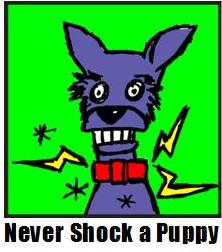 click on the bright green and blue image to visit the Never Shock A Puppy blog and leave a comment before midnight MDT, Sunday, September 24. You’ll be entered into a contest to win great prizes including a gift certificate from K9Cuisine and a free training session with a reward-based trainer in your area!
click on the bright green and blue image to visit the Never Shock A Puppy blog and leave a comment before midnight MDT, Sunday, September 24. You’ll be entered into a contest to win great prizes including a gift certificate from K9Cuisine and a free training session with a reward-based trainer in your area!
Tags: Barking, Be the Change, Behavior, Clicker training, Dog behavior, Dog Star Daily, E collar, Excessive barking, Ian Dunbar, Karen Pryor, Never shock a puppy, Positive punisment, Positive reinforcement, Positive training, Punishment, Reward Based Dog Training, Shock collar, Spray collar, stop barking, stop my dog from barking
